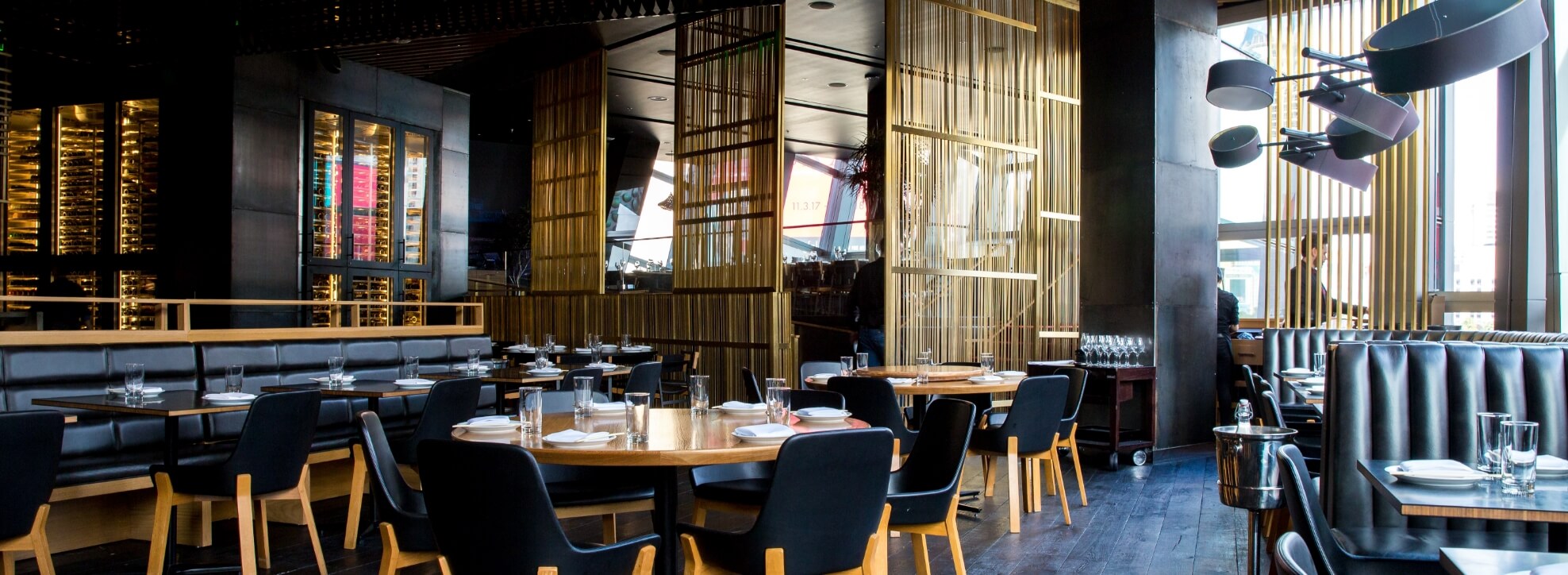
Understanding Restaurant Profit Margins
Profit margins might just be the most important performance indicator for a restaurant.
After all, even if your restaurant is considered the hottest in town, gets rave reviews online, and is bringing in tons of cash each month — none of that matters if your net profit margin is low – your costs are too high in relation to the money you’re making.
And it’s not enough to just break even. Maintaining a healthy net profit means that your restaurant will be able to sustain itself despite unforeseen obstacles and drops in demand that could otherwise result in your inability to pay your bills and keep your doors open.
It’s time restaurant owners stopped rolling the dice and took the steps to ensure a healthy profit margin each month.
It’s not difficult and doesn’t require a PhD in statistics. We’ll take you through the steps you need to calculate your restaurant’s profit margins and improve them if they’re too low.
How to Calculate Restaurant Profitability
Let’s get straight on the financial terms first — even though you probably already know a lot of them as a small business owner.
Profitability, of course, refers to the amount of money that your restaurant makes after you account for expenses.
Being profitable is better than being in the red, but it’s just the first step. You also need to make sure you’re aiming to make enough profits to cover unexpected expenses, guard against slow times that will inevitably come in the future, and continue to grow and improve your restaurant over time. You can do that by aiming for a healthy restaurant profit margin.
Profit margins calculate what percentage of your restaurant’s revenue is profit. To find your restaurant’s profit margin, you can calculate the total profits earned in any given time period and divide that by the total revenue earned during that same period.
The Ideal Restaurant Profit Margin
So, how do you know when your restaurant profit margins are too low?
Ideal profit margins tend to vary by industry, and some studies have restaurants at the lower end, with averages around 3-5% percent profits, which certainly doesn’t leave a lot of room for error. It’s a general rule of thumb in other businesses to shoot for a 10% margin, at minimum. A 20% margin is considered a healthy one, and anything above that is considered impressive.
But just because other restaurants might operate with small margins doesn’t mean that your restaurant must.
There are plenty of things you can do to make sure that your restaurant has the cash it needs from month to month.
Top 11 Ways To Improve Restaurant Profit Margins
In order to improve your restaurant’s profit margins, you have two courses of action: either boost sales or to reduce expenses. It’s a good idea to try tactics from both sides. Here are just a few of the tools in your arsenal when it comes to improving profit margins:
1. Remove unprofitable dishes from the menu
Take a look at your menu and take some time to analyze which individual dishes are the least profitable. If those unprofitable dishes are also relatively unpopular, you can safely remove them to boost your profits.
Along those lines, you may also consider removing certain expensive ingredients all together if they aren’t adding significant benefits.
You can also make an extra effort to use more seasonal ingredients that are fresher and less expensive and boost the profitability of the other dishes on the menu.

2. Highlight profitable menu items
Give the most popular and profitable items key real estate on the menu. Make sure to add beautiful photos of those meals, make sure to have icons that highlight popular dishes, and put them in the areas where your patrons are likely to look first.
Highlight seasonal menus that take advantage of local and inexpensive ingredients on a special seasonal insert to draw the attention of new and regular customers alike.
3. Reduce food waste
Food waste can be a huge and largely unnoticed drain on your restaurant’s finances. Here are a few of the tactics you and your staff can use to combat food waste:
- Redesign your menu to use more shared ingredients, thus ensuring that the most expensive ingredients or more perishable ingredients are less likely to be wasted
- Use sales data from your point of sale system to better assess what the potential demand will be ahead of time, then adjust your food purchases appropriately
- Adjust portion sizes if servers notice food consistently being thrown away with certain dishes
- Use pre-prepped ingredients to ensure that food is not wasted in the preparation process. As Jeremy Lycan writes in FSR Magazine, “When dealing with raw ingredients, like whole chickens, for example, kitchen staff has to be sure all the meat is removed from the carcass. This requires knowledge and experience of the proper technique for doing so. If a chef loses one or two ounces per bird and is preparing 50 or more, food waste starts to add up.” (Using pre-prepped ingredients also means you’ll save space in the kitchen and can train new employees more easily.)
- Update your inventory system to keep better track of food freshness and also track (and deter) potential theft.
- Make sure your employees understand how to properly store produce and other food so that it lasts as long as possible.
4. Use data to keep staff levels more efficient
When your restaurant is overstaffed, you waste money and frustrate your employees. (After all, no one wants to work on a slow day when tips will be minimal).
Modern POS systems allow administrators access to detailed reporting systems that can use data to predict demand more accurately, which means you can keep staffing levels more appropriate, keep employees happier, and avoid paying employees to stand around with nothing to do.

5. Modify your physical space to save money
6. Set up a notification system for “comps”
Comped meals can be a surprisingly significant source of waste and loss.
Your managers may be much less likely to comp a meal if they know that their boss will get a notification in real time each time they do it. They’ll at least hesitate and give it some extra consideration. Using a system to track comps also gives owners a better idea of the circumstances that cause them so managers can consider ways to limit their occurrence.
7. Invest in energy savings
Restaurant appliances can use a lot of energy, so making some improvements in your infrastructure may be an easy way to cut down on overhead expenses.
Another way to save energy is to consider adjusting your hours of business so that your equipment isn’t running for just a few customers. Analyzing which hours of the day your restaurant is least profitable can be another way to increase margins.

8. Invest in marketing
If you don’t have an easy way to communicate with your loyal customers and keep them informed of special events at your restaurants, you are missing out on a lot of potential revenue.
Popping in your customers’ inboxes and social media feeds periodically makes it more likely that they’ll think of you the next time they’re considering dining out or picking up a meal for dinner.
Other marketing initiatives like buying online ads, soliciting reviews from happy customers for search engine sites, running special promotions, or sponsoring community events or organizations, can make it easier for new customers to learn about your restaurant — and make them feel good about supporting you.
9. Add new streams of revenue
You may find that you can significantly increase your restaurant’s revenue by diversifying what your restaurant sells.
One common option is to officially offer gift cards. People can buy gift cards all year round — even during the holidays when your dining sales might typically be lower. Offering gift cards may allow you to reach a group of consumers who might not ever dine at your restaurant personally, but who will buy for someone who lives in the area or who particularly enjoys your food.
Another option to bring in more revenue is to branch into a bit of retail sales, such as by selling branded merchandise or selling some part of your menu’s signature dishes (such as a signature sauce or drink mix). You can also boost revenue by making these retail products available for sale online, as well, to add convenience for customers — and even give them the opportunity to ship your products to out of town friends.
Another option for adding a new revenue stream is to offer a special takeout or delivery menu if you haven’t done so already — just make sure that it’s profitable to do so, as we discussed in our post about no-contact delivery.

10. Train your servers on upselling
You may find that you can earn much more revenue from each group that dines at your restaurant if your servers have been trained to suggest complementary items that enhance diners’ experience at your restaurant.
Upsell options could include appetizers, wine pairings, coffee or other beverages, additional courses, or dessert suggestions. If you’re using a modern POS system, tableside ordering technology can even make these suggestions digitally.
11. Invest in better restaurant technology
Perhaps the simplest way to keep your restaurant’s profit margins in good shape is to invest in the right technology. A good point of sale system makes it easy for owners and managers to calculate those margins and keep an eye on them each day.
The best restaurant POS software has sophisticated reporting dashboards that allow administrators to view profitability by menu item, by server, and by day, week, or any other time increment, and their inventory tracking systems help restaurants minimize food waste.
A good POS also makes it easier to boost revenue by making it easy to sell gift cards and reach out to customers by email.
Truffle POS is the all-in-one POS system your growing restaurant needs. The features we offer drive revenues, minimize expenses, and ensure your kitchen runs smoothly and efficiently.
To learn more, book a demo and see the system for yourself.



